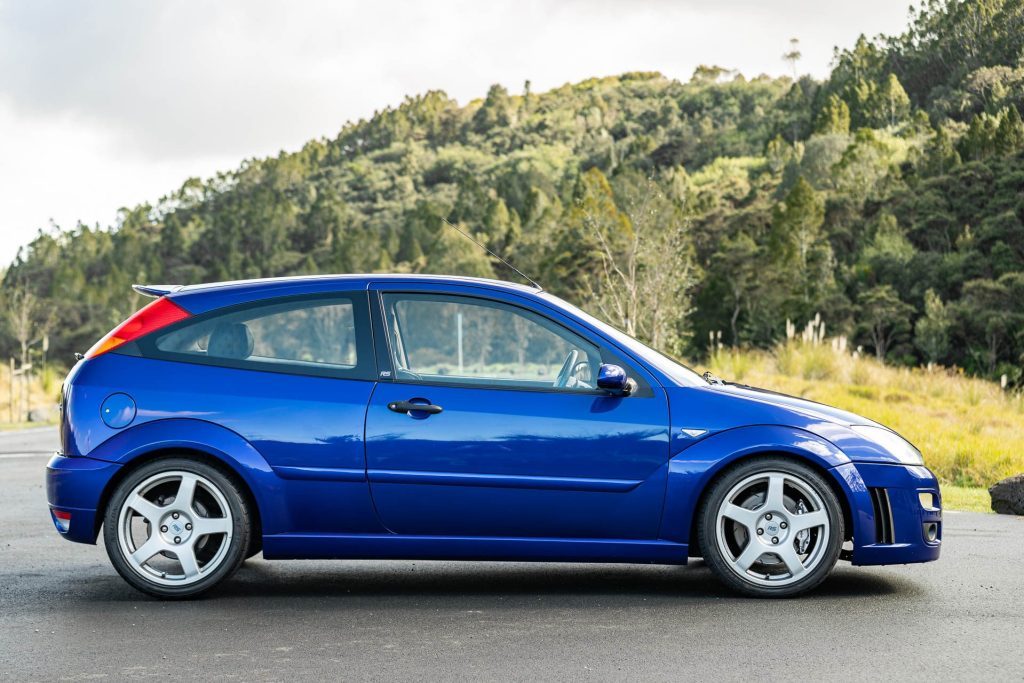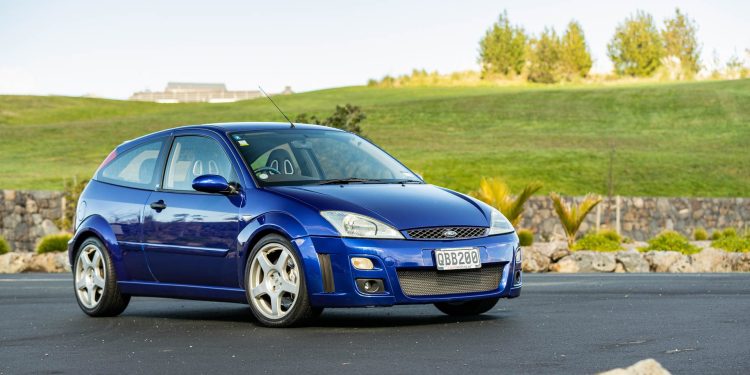2004 Ford Focus RS
Words: Kyle Cassidy | Photos: Isaac Western
Ford’s RS badge took some time out in the late nineties but was revived when the company decided it needed a road car to replicate its WRC machine. The result was the first Focus RS.
Think back to the Group A era of rallying and it was the road cars that came first. These were the homologation specials and once manufacturers had made enough of them, they could hand them over to the race team to turn out the competition machines.
But in the WRC era, things were flipped around with showroom versions of the racers spawned to help boost brand cache. At least that was the case with the first-generation Ford Focus RS.
Following a succession of RS-badged Escorts dating back to the RS1600 of 1970, there had been a lull in fast Ford action following the cessation of that nameplate. The Cosworth version of 1996 was the last to wear the letters R and S.
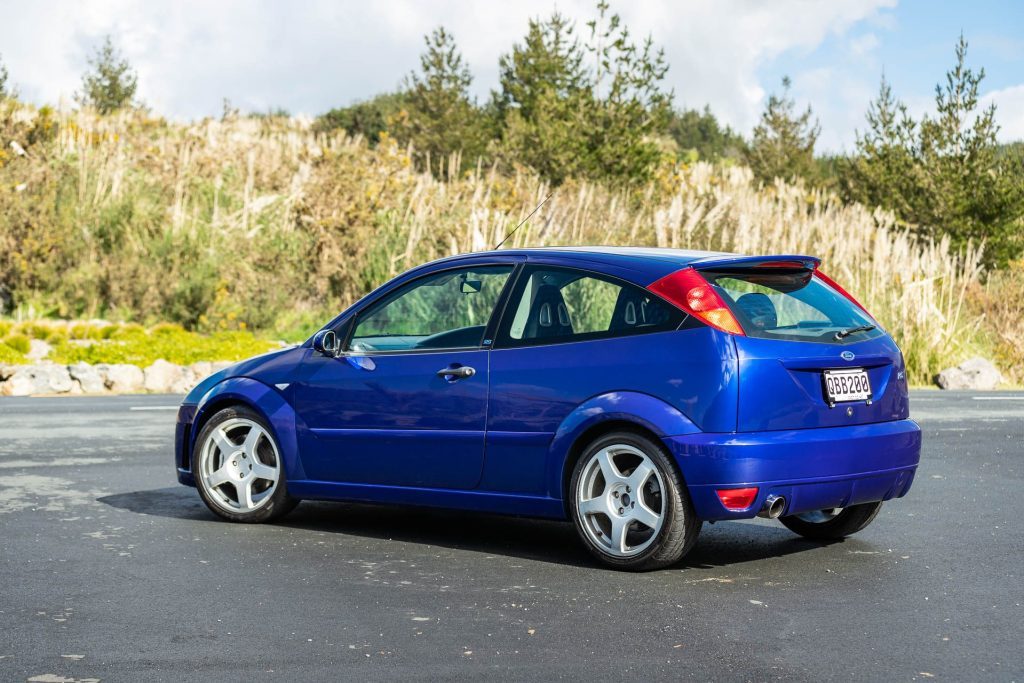
With the switch to WRC car regulations, there was no need for homologation models, and Ford Rallye Sport had been campaigning the new Ford Focus in the WRC championship, badged as an RS.
And so to help build a halo for the new range, they wanted to make a road-going version and we got the first Focus RS in 2002.
Based on a three-door Focus, the RS would need some 70 per cent of its components tweaked to replicate the rally car. That included new body panels, the blistered arches front and rear allowing a large increase in track width (identical to the rally car in tarmac spec).
But what the platform (and the development budget) didn’t allow for was the inclusion of four-wheel drive.
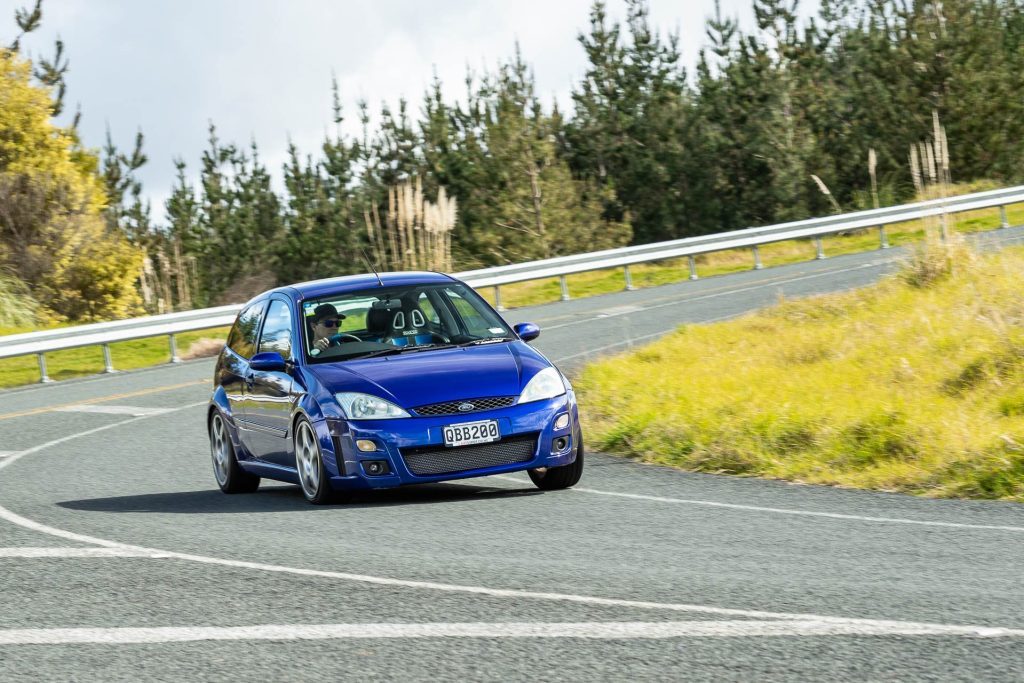
Still, the development team did have some nifty drivers to help hone the handling, with both Colin McRae and Carlos Sainz working on the prototype.
McRae even took a late development car for a burst through the special stage at the San Remo WRC event during a shake down run.
Prior to the arrival of the RS, the hottest Focus was the rather mild ST170, its 2.0-litre naturally aspirated engine making 127kW and 196Nm. The RS would employ a turbocharged version of the 2.0-litre iron block Duratec engine.
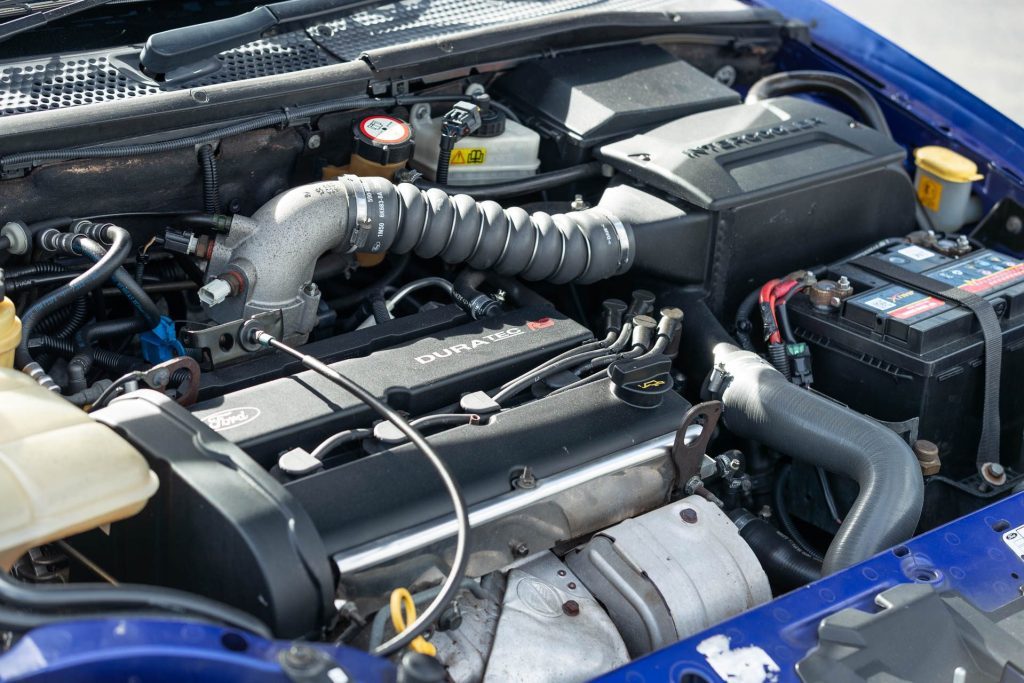
This would receive a new alloy head with sodium-filled exhaust valves, while a water-cooled Garrett turbo blew 1.2 bar of boost.
Along with a water-to-air intercooler, a unique airbox and a stainless exhaust system, the result was 158kW at 5500rpm along with 310Nm at 3500rpm.
While the ST170 had a Tremec-supplied six-speed manual, it wasn’t rated to handle the extra turbo’d torque and so Ford used a strengthened version of its own MTX-75 five-speed manual for the RS, along with an AP Racing clutch.
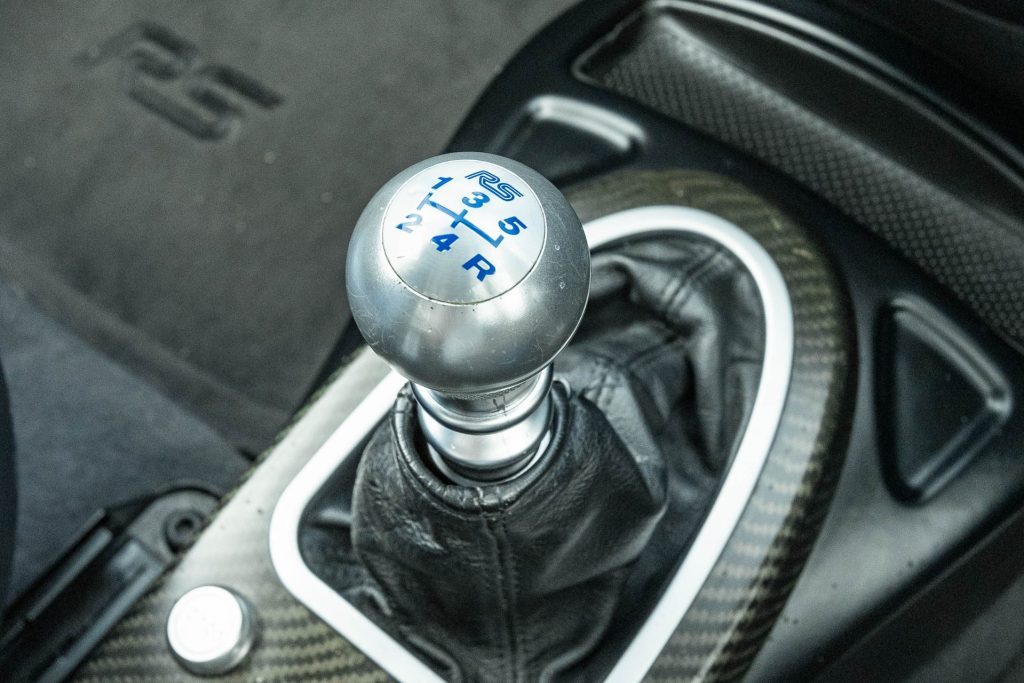
Grounding the power was the job of a Quaife torque-biasing front diff which would send the majority of the Newton metres to the wheel with the most traction. A purely mechanical system, it had no help from any electronic traction control.
The suspension got some love in the form of Sachs dampers while the front Mac struts received modified lower A arms to dial in more negative camber and help increase the track to 1514mm. The ‘Control blade’ multilink rear received similar fettling.

Braking was boosted with bigger rotors (324mm on the front) and four-pot Brembos. The 8 x 18-inch OZ rims wore 225/40R18 Michelin Pilot Sport rubber while the steering rack, at 2.9 turns lock to lock, was the fastest ratio fitted to a Ford at the time.
The 1270kg Focus was said to clock 0-60mph in 6.4sec and fuel consumption was rated at 10.1L/100km.
The interior was blessed with a few RS upgrades, including a set of Sparco seats trimmed in a mix of leather and Alcantara, an alloy shift lever and handbrake, and a carbon fibre finish for the console. This housed the starter button and the build plate number.
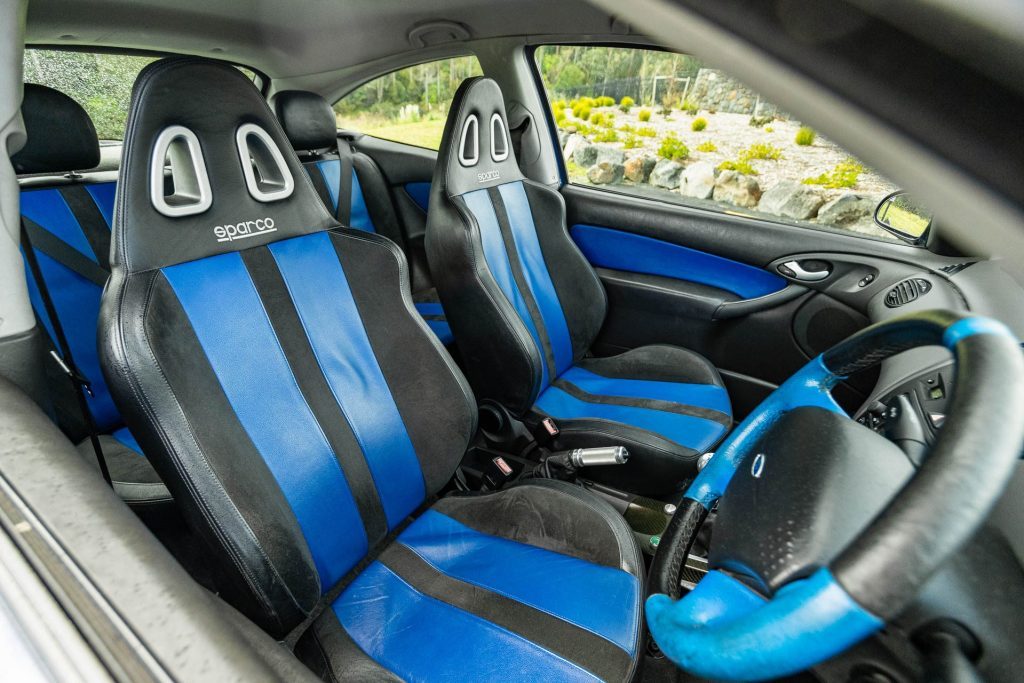
The RS was made at the Saarlouis plant in Germany, 4501 cars minted over a short run of just two years.
However, there were a few more built, so-called pre-production units that rolled down the line first to help iron out any manufacturing problems, while they were also tested on road before ultimately meeting their fate in the crusher.
Sometimes, though, one or two slipped through the net, like this car here. It wears a build plate 0000, and while its provenance isn’t 100 per cent documented, it’s believed to be a surviving pre-production unit.
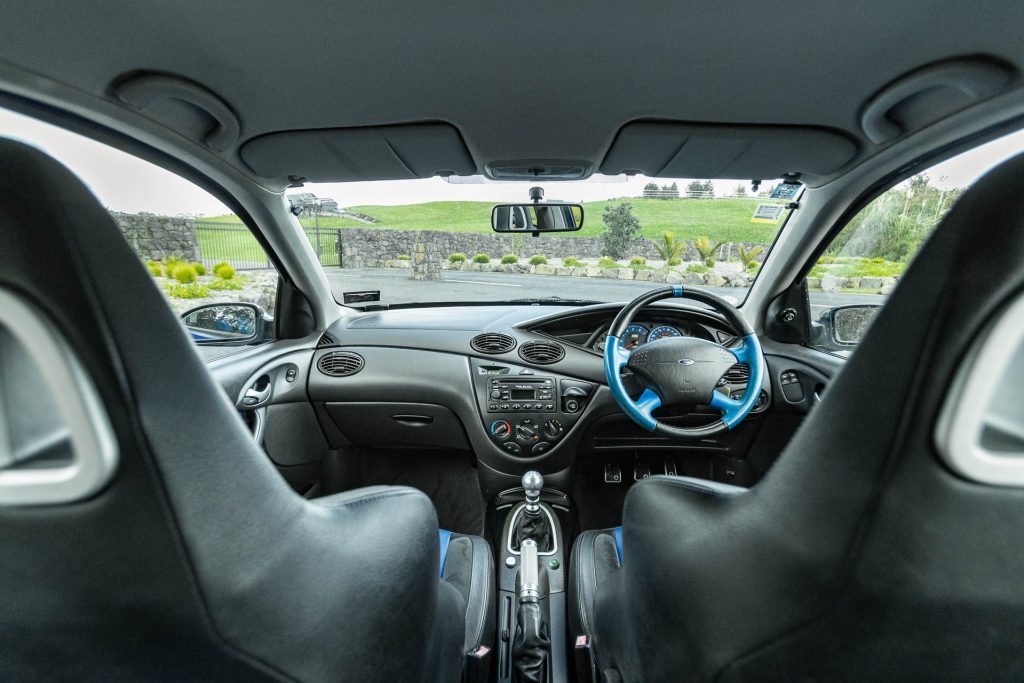
Along with 12 development mules, Ford also made 26 pre-production cars and one of these was somehow sold to a collector and made its way to Japan in 2004.
It ended up in an auction in 2019, and now finds itself in New Zealand after it was bought by the owner of AutoSpot car dealership, Adam Brown. Initially Brown didn’t realise it was a 0000 build car, as he says he literally stumbled across it at an auction, bought it and only discovered the unique build plate once it was back in NZ.
He says he has a photo of this car at the Ford development centre that was sent to him via one of the engineers who worked on the cars in Europe.
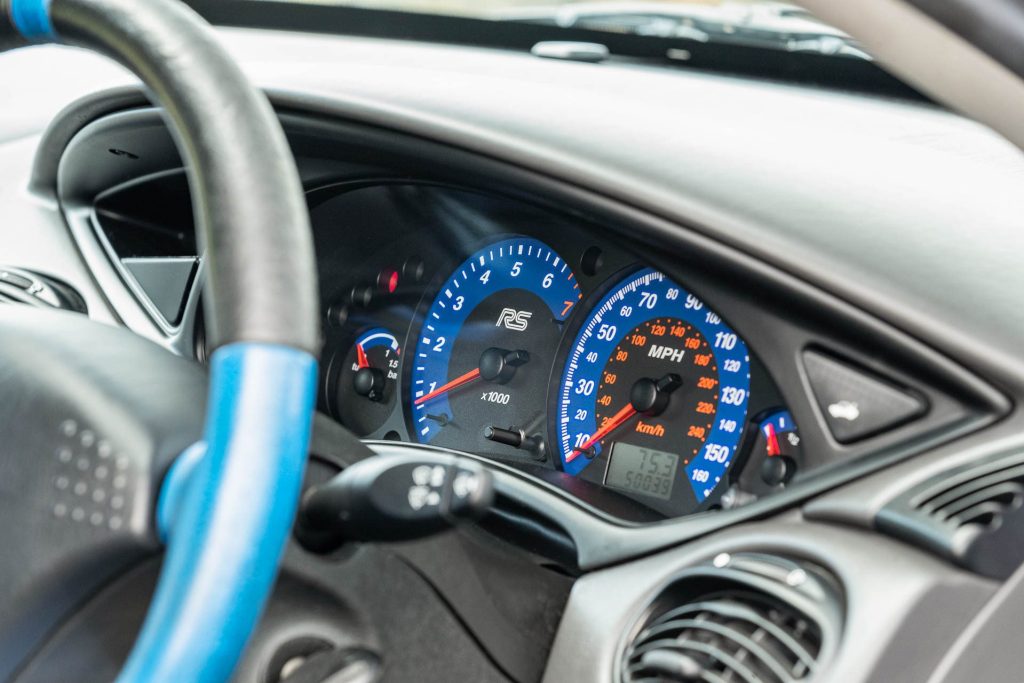
Apart from being serviced, including getting a new cambelt, and receiving a new set of tyres for compliance, he’s kept it how he found it. It’s currently for sale on autospot.co.nz for $49,990.
It’s still a good looking machine, well stanced and proportioned, with its blistered arches and a wheel at each corner. The funky Focus styling, with its peculiar glass house, looks better on this three-door model.
Ensconced in the snug-fitting Sparcos, (set a little high but that also makes it easier to get into) we twist the key in the ignition and wonder why it won’t start. That’s right, the start button on the console. And then the Duratec comes alive, settling into a loud idle.
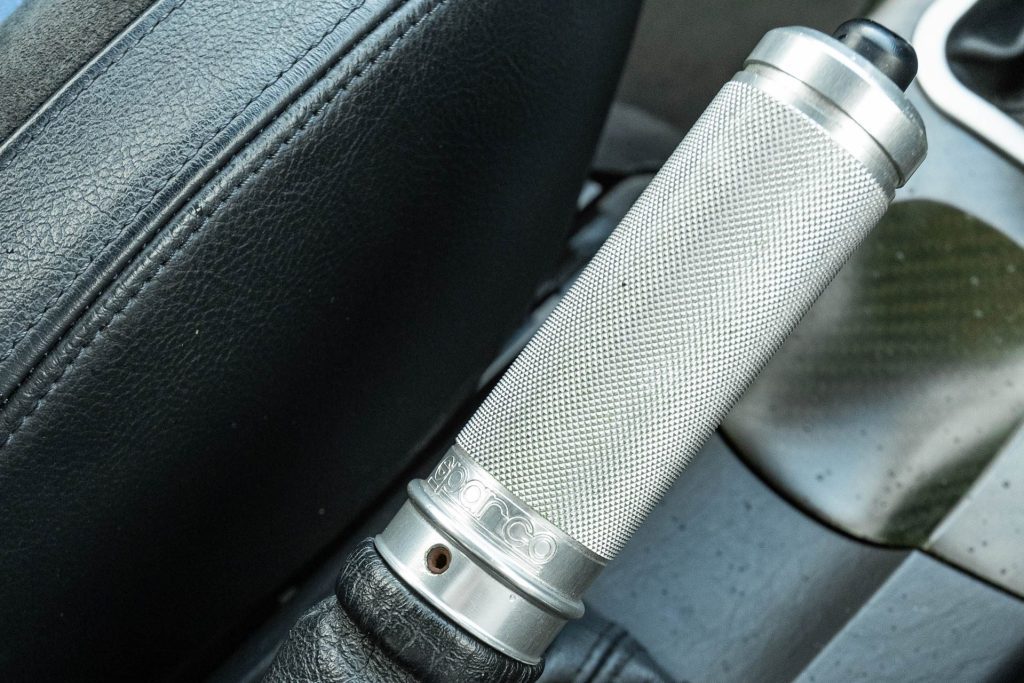
Being an early 2000s model, it’s a civilised machine, clutch action positive but not stiff, the gear change smooth. The ride’s not too lumpy at urban speeds and on the motorway. Its 2.0-litre turbo is happy to pootle about but doesn’t feel particularly strong down low like the modern units of a similar capacity.
The instrument cluster comes complete with a boost gauge which starts to move slowly when the tacho swings past 2000rpm but it’s not until 3500rpm that it’s on full boost. Then it gets going, the engine pulling nicely, approaching 7000rpm as the shift light starts blinking.
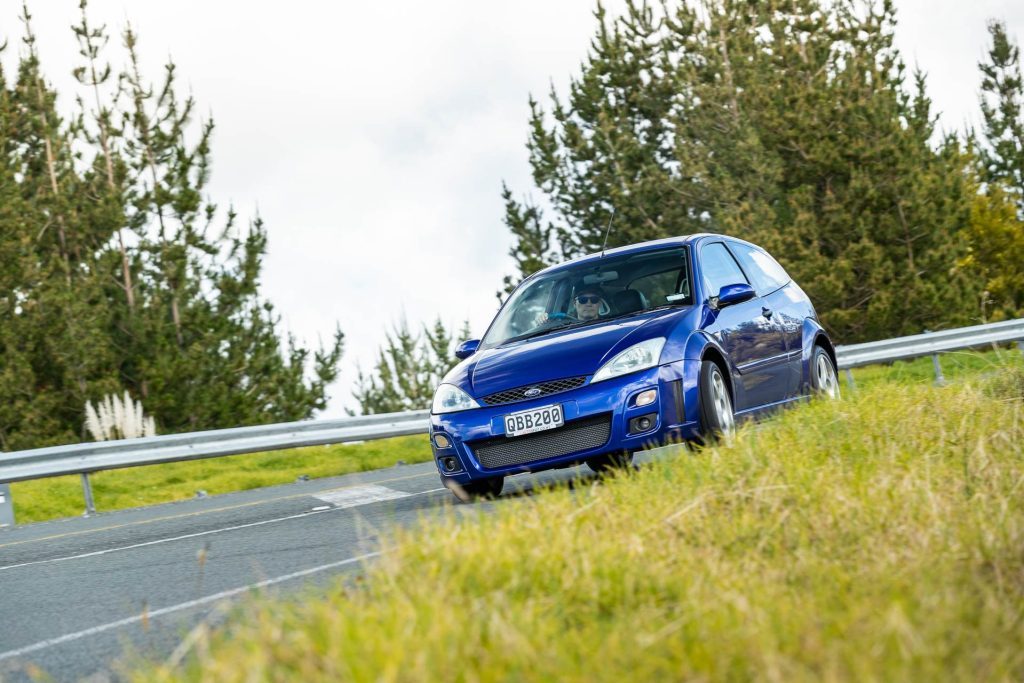
There’s a reasonable rasping induction note to complement the exhaust tune. The gear change is a bit long, and needs a guiding hand across the gate but those are well defined.
As speeds rise, the bumps are more noticeable – you feel pretty much every lump – while it’s not too keen on gnarly mid-corner ripples. It does well for traction though. It’s not overly powerful and while it’ll follow the contours of the road on occasion, it’s not too hard to keep tracking straight.
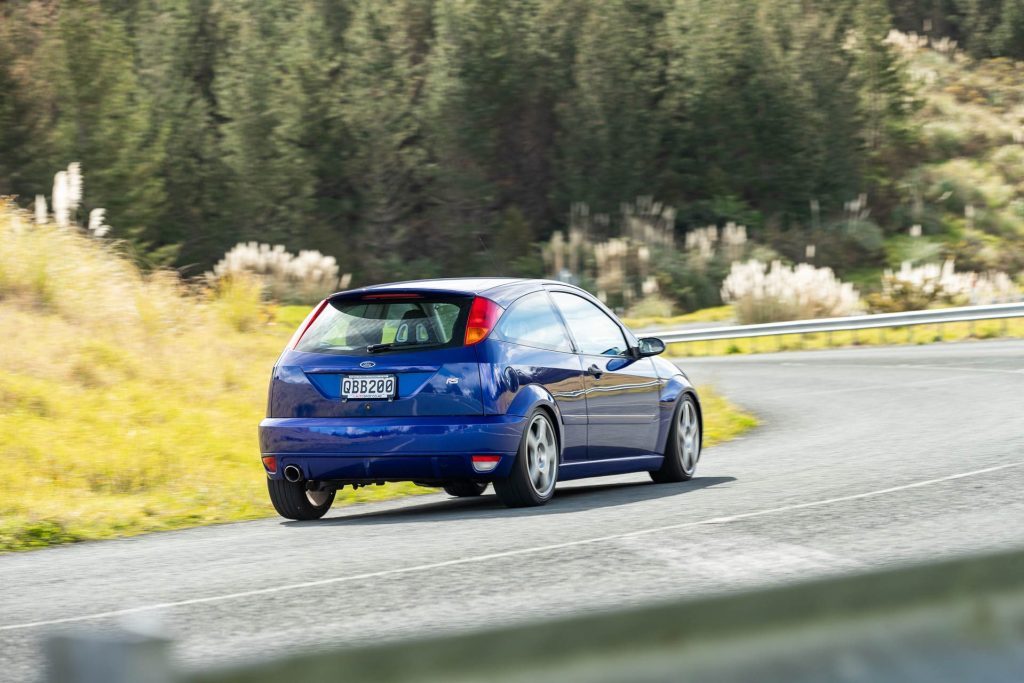
The steering is a highlight, and always was a positive trait of this model Focus. Here it has great weighting and feel. As a result, the RS feels agile, turning quickly, and the front-end grip is noteworthy for a nose-heavy machine, while the rear has a hint of life to it as well.
There are few squeaks and rattles from the interior and aside from the ride when it gets bumpy, this has a certain character that’s easy to like.
It’s also still a looker, and very much a rarity here. Knowing that legends such as McRae and Sainz had a say in the handling also adds to its charms.
